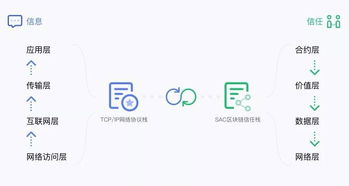SAC Link: A Comprehensive Guide to Understanding Soft Actor-Critic Algorithms
Soft Actor-Critic (SAC) algorithms have emerged as a significant advancement in the field of reinforcement learning. Designed to tackle continuous control tasks, SAC combines the power of deep neural networks with importance sampling techniques. This guide aims to provide you with a detailed understanding of SAC algorithms, their principles, components, and applications.
Understanding SAC Algorithms

SAC is a model-free reinforcement learning algorithm that focuses on maximizing the expected cumulative reward while minimizing the strategy entropy. Unlike traditional value-based methods like Q-learning, SAC directly learns a policy function, allowing it to handle continuous action spaces effectively.
The core idea behind SAC is to balance exploration and exploitation by maximizing the sum of expected reward and strategy entropy. This balance ensures that the algorithm explores different possibilities in the continuous action space while avoiding over-exploration.
Components of SAC Algorithms

SAC algorithms consist of three main components: the policy network, the Q-network, and the value network.
| Component | Description |
|---|---|
| Policy Network | Generates a probability distribution over actions based on the observed state. |
| Q-Network | Evaluates the value function for a given state-action pair. |
| Value Network | Estimates the value function for a given state. |
These networks work together to learn an optimal policy that maximizes the expected cumulative reward while minimizing the strategy entropy.
Training Process of SAC Algorithms

The training process of SAC algorithms involves two main stages:
-
In the first stage, the policy network samples actions and calculates importance weights to compute the target function.
-
In the second stage, the policy network is optimized using stochastic gradient descent algorithms.
By minimizing the strategy entropy, SAC algorithms maintain a certain level of randomness during the learning process, which helps in exploring diverse strategies and avoiding over-exploration.
Applications of SAC Algorithms
SAC algorithms have found applications in various domains, including robotics, autonomous driving, and control systems. Some notable applications include:
-
Robotics: SAC algorithms have been used to train robots for tasks like manipulation, navigation, and grasping.
-
Autonomous Driving: SAC algorithms have been employed to train autonomous vehicles for safe and efficient driving.
-
Control Systems: SAC algorithms have been used to optimize control systems in various industries, such as power systems and chemical processes.
Conclusion
SAC algorithms have revolutionized the field of reinforcement learning, especially for continuous control tasks. By combining the power of deep neural networks with importance sampling techniques, SAC algorithms have demonstrated remarkable performance in various applications. This guide has provided you with a comprehensive understanding of SAC algorithms, their components, and their applications. As you delve deeper into the world of SAC algorithms, you will find that they offer a promising solution for tackling complex control problems.


















